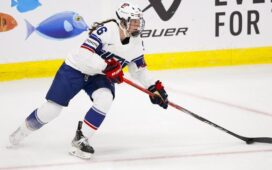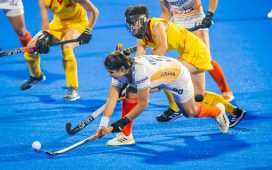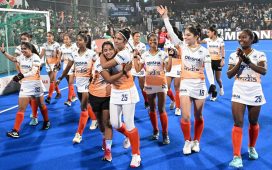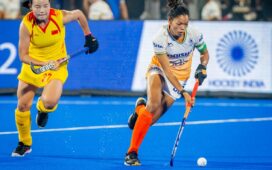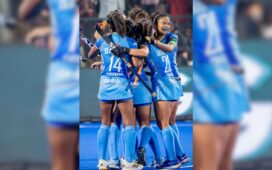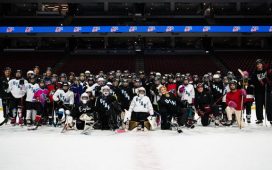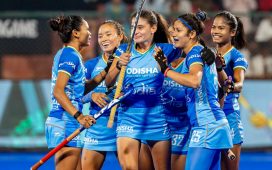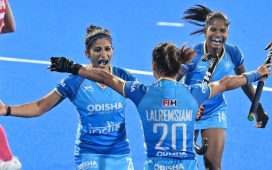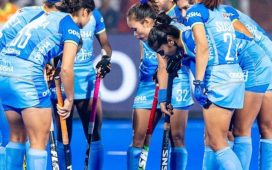Daniel Carcillo, 35, hasn’t played in the NHL since 2015, but he casts a bigger shadow over the sport now than he ever did as a player. He’s an outspoken advocate for changing hockey culture and redefining how we look at traumatic brain injuries, hazing and abuse in junior hockey, homophobia and more. He’s passionate about changing the game because he believes he once embodied all the elements of the game he wants to change.
Carcillo recently caught up with The Hockey News to discuss a variety of hot topics, including concussions, abuse, his late friend Steve Montador and a new business venture as CEO of Wesana Health, a company on a mission to treat concussions with the use of psychedelic mushrooms.
THE HOCKEY NEWS: You’re outspoken about wanting to change conformist hockey culture. During your NHL playing career, were you aware of systemic problems in the sport?
DANIEL CARCILLO: It’s something I didn’t realize until I stepped away from the game and started to work on myself. There’s no room for introspection, into self-discovery, during your playing career, because nobody gives a s— about that. All they care about is that you get to the rink and bring your discipline, your hard work. You’re not supposed to be creative. You’re not supposed to be outspoken. You’re supposed to be a soldier and just toe the line. The better soldier you are, those are the guys that last the longest.
The problem with the system is it leaves us at a point where most of us are really young when we leave the game. Most of us are really young when we leave home to go play junior, and you’re structured into a system where you’re travelling, you’re not really going to high school, you’re not really growing, you’re not really learning who you are as a person. A lot of us are 16 and 17 emotionally, we never do things on our own, and everything is always handed to us.
I use two things that I’ve learned in hockey which are hard work and discipline. Everything else I’ve left behind, because you have to figure out what makes you tick away from playing the sport. Something I advocate for is, even though these teams don’t want you to do it, be super independent and go to concerts and restaurants and get ingrained in the community. Do everything you can to build your personal brand before you get out of the sport so you know what you’re going to do with your life.
THN: What is something you’ve learned about yourself since retiring as a player?
CARCILLO: Self-confidence. I really love who I am, rather than motherf—g myself and negatively motivating myself. I’ve given myself time to heal a little bit and really just discover what makes me tick. And it’s funny because all those traits were there in hockey. I sacrificed myself for the good of the team, and I continue to do that in aspects of how I continue to move forward in business and what I’m thinking about doing with my next venture.
When I wake up now, I’m confident, and I can think for myself, and I can create. I can problem solve. Everything is so much more exciting because you’re not pigeon-holed into focusing on going into the rink and just getting warmed up, getting on the ice, sticking to the left side of the wing, making passes and all that good stuff. It just becomes a little bit too much routine.
THN: Tracking the chronology of when you had your eureka moment about hockey culture, was it the concussion findings and specifically Steve Montador’s death that put you on the path to the awakening? Or was it more of a gradual thing than a cataclysmic event?
CARCILLO: It was really while I was still playing. I got my seventh concussion. The symptoms were extremely bad. I couldn’t look at a TV screen or a phone for two or three weeks. So that really scared me. Steve had died (a few) months earlier before I got that seventh, and I was already recognizing signs and symptoms in myself that I saw in him, and that was really scaring me. And then I won my second Stanley Cup, and I didn’t want to be around anybody. I didn’t want to celebrate anything, I didn’t go to the banner raising. Weird things started to happen. So then I made a decision on my career based off the symptoms. I also didn’t want to be an absent father on the road for 160 days of the year.
So I had to make a decision, and then I started to research. Usually once I make decisions or think about doing something, I dive in wholeheartedly. So then I started to delve into the research, and I realized that we were lied to. I realized all the information that was withheld from us by a league that didn’t have our best interests in mind. So then I started to advocate. I started to advocate because Steve was dead and he couldn’t do it, and I knew that if I was dead that he would be doing it.
So then it’s just about advocating and telling the truth, man. I know it pisses a lot of people off in hockey, but it’s the truth. Just provide information about the risks of repetitive head trauma. There are risks. It’s linked to neurodegenerative disease. Tell guys that at the beginning of the year, and you won’t have lawsuits, and you won’t have people coming back trying to claim worker’s comp, and you won’t have people committing suicide at the age of 30, 31, 32. You won’t have guys dying at that age because of neurodegenerative disease. And you’ll re-instill a confidence in parents to put their kids in a collision sport. You’ll inherently be helping other communities too by taking it seriously rather than continue to fight in court former employees who made you who you are.
There’s a lot of complexity that goes into it, but really, I guess what awoke me the most was researching. The information that was kind of withheld, all this stuff in the (NHL concussion) lawsuit. I didn’t join the lawsuit right away. I owned a rink at the time, a studio rink, and I was running a business, and I was still in hockey, and I went from that to working in a Blackhawks practice facility owning a gym, and then it was about three and a half years of that before I decided, OK, enough is enough, I can’t look at these people anymore, I really want nothing to do with this community. Not right now, anyway. And I made a decision for myself and my own personal recovery to make a clean cut.
THN: As a longtime post-concussion syndrome sufferer and a leading voice in the NHL concussion lawsuit, you’re now a major advocate for alternative methods to treat traumatic brain injuries (TBI), such as psychedelic mushrooms. How do they help with symptoms?
CARCILLO: What you’ll hear in concussion clinics, and none of these things are validated, is that they’ll identify regions of your brain that are shut down due to trauma, and then they will build you a personalized program accordingly and help you stimulate the regions that are shut down as well as build new neurological pathways around your trauma. I heard that and I thought it was great, so I did that for four years and spent $200,000 and still did not get any results on a (brain map test) that were any more favorable than when I started.
Then I turned to psychedelics 13 months ago. What I did was exactly what these neurological clinics were claiming they could do. What psilocybin (the psychedelic ingredient in mushrooms) does is excite brain regions that could have been shut down due to trauma, but really it overloads the system, so it excites all six parts of the brain…specifically the frontal lobes. Doctors, when we die, they’re finding a lot of our CTE there. So it works specifically on those frontal lobes and helps you build new neurological pathways.
So now, I’ve created a biotech company, Wesana Health, that will research through Health Canada and FDA clinical trials a similar protocol to what has helped me regain my brain health and quality of life. This includes onloading doses and maintenance doses of psilocybin coupled with other adaptogens and cannabis. The No. 1 cause of death after a TBI is suicide, and there’s no validated novel care option on the market, so that’s now my life’s work.
THN: You also speak out against abuse in major junior. How and why do you devote time to so many different causes?
CARCILLO: I’m not trying to do this to come back to hockey. I’m not doing this for money. I’m doing this to show everybody out there that you can take your power back and you can hold people accountable for the sexual, physical and verbal abuse that happened as we were minors that all these authority figures knew about. It’s not right. Everything needs to change. I guarantee they can instill confidence back into parents that “I can give you my kid to go into a dressing room that gets locked, that I have no idea what’s happening in,” and they can be safe. Let me be clear: hockey is an amazing game. I still love it. I still play it. There’s a difference between the game and the institutions.
THN: What do you think is the No. 1 thing that needs to change about hockey culture today?
CARCILLO: The hierarchy. Traumatized coaches that got this type of abuse in junior are passing it on in the form of yelling, being negative, reaming on kids and making kids cry. I hope that we can start shifting from less of a fear-based learning mentality to more of a creative, happier environment.
That being said, it’s not about being flippant or living in this soft society. You have to understand something about hockey: it’s hard enough. You’re going to get pucks off the toe, you’re going to get slashed, it’s a difficult sport to succeed in, and it’s going to test you as a human being. I just think that the communication level and the reason that we’re in this spot is…think about the abuse that happened back in the ’80s, when they didn’t have cell phones. Right? The ’90s, and then think about who’s in charge right now: all of those people (who played then).
So the first thing that I believe needs to happen, and this will be the last thing that needs to happen, but the first thing that I truly wish would happen, is just a new hierarchy of people. And if I already know that’s not going to happen, the other way to ensure it happens is to bring people to court. Lawsuits. Hold them accountable. Make it public enough where people are actually going to talk about it, because that’s one of the biggest hurdles. Shine enough light there, where people are actually going to start looking. And then change it. And implementing changes is important. You can’t just look at lawsuits coming at you and highlight old programs that have never worked. I was a player during those programs. It never worked.

